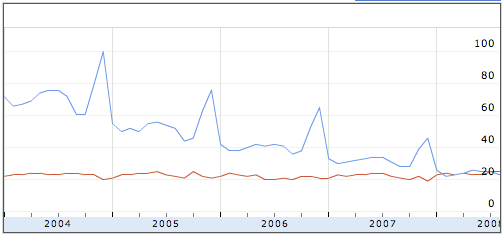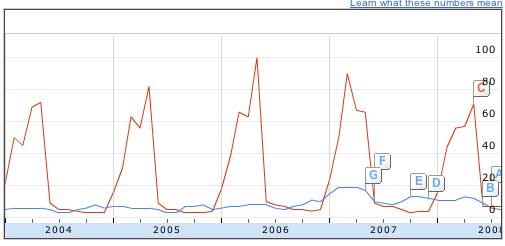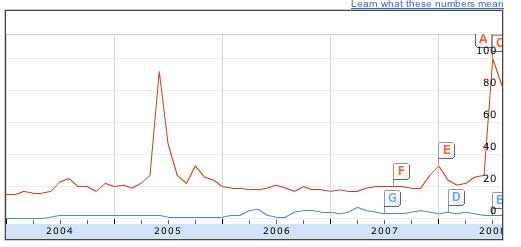A thread over at the neXtPrize blog got me thinking about Early Warning systems–how mobile technologies like SMS can allow Twitter-like real-time monitoring of data for the purpose of discovering emerging disasters. Pragzz pointed me to a couple of non-profs that are already supporting this. Ushahadi (Swahili for 'testimony') is an Open Source platform that anyone can use to set up and manage monitoring campaigns.
The core engine is built on the premise that gathering crisis information from the general public provides new insights into events happening in near real-time. It is being developed by a group of volunteer developers and designers, hailing primarily from Africa.
MobileActive.org is a community of people and organizations using mobile phones for social impact.
We are committed to increasing the effectiveness of NGOs around the world who recognize that the 3.5 billion mobile phones provide unprecedented opportunities for organizing, communications, and service and information delivery.
Their site also features a directory of NGOs who are using mobile phones to make a social impact.
Researching this reminded me of a Ted talk I'd heard by Larry Brilliant on the occasion of his winning a 2006 Ted Wish prize. Larry's wish was to build a better early warning system for monitoring the outbreak of dangerous disease. Larry knows of what he speaks- he led the WHO team that eradicated Smallpox. He also was a founding member of the Seva Foundation which has restored sight to hundreds of thousands. Based on the work previously done by GPHIN Larry launched InSTEDD which plans to amplify the data collection and monitoring capabilities of GPHIN a hundredfold. You can watch Larry's amazing Ted Talk and read a short history of the INSTEDD project here. Larry launched InSTEDD with the $100,000 Ted prize. It will be interesting to see what he can do with $1 billion as head of Google.org. Go Larry!

See Also: HealthMap.org
Update 022309: Larry departs Google.org to become "Google's Chief Philanthropy Evangelist".
.

 I first learned about
I first learned about 



